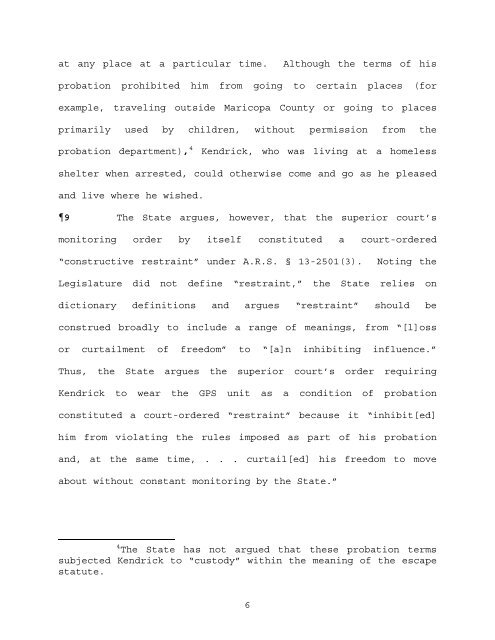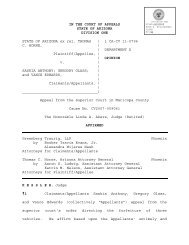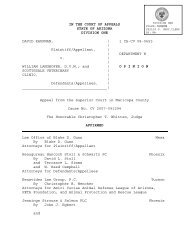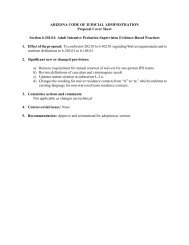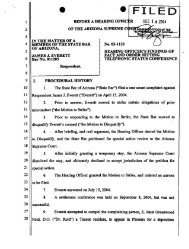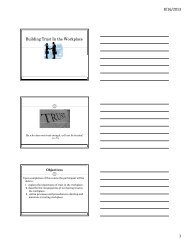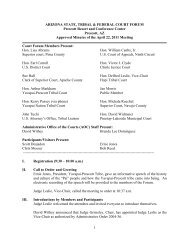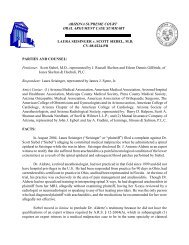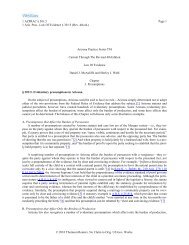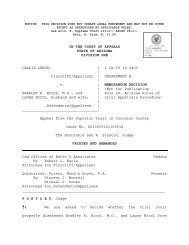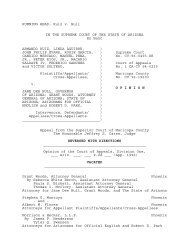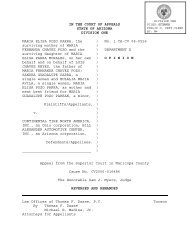State v. Kendrick - Arizona Judicial Department
State v. Kendrick - Arizona Judicial Department
State v. Kendrick - Arizona Judicial Department
Create successful ePaper yourself
Turn your PDF publications into a flip-book with our unique Google optimized e-Paper software.
at any place at a particular time.<br />
Although the terms of his<br />
probation prohibited him from going to certain places (for<br />
example, traveling outside Maricopa County or going to places<br />
primarily used by children, without permission from the<br />
probation department), 4<br />
<strong>Kendrick</strong>, who was living at a homeless<br />
shelter when arrested, could otherwise come and go as he pleased<br />
and live where he wished.<br />
9 The <strong>State</strong> argues, however, that the superior court’s<br />
monitoring order by itself constituted a court-ordered<br />
“constructive restraint” under A.R.S. § 13-2501(3). Noting the<br />
Legislature did not define “restraint,” the <strong>State</strong> relies on<br />
dictionary definitions and argues “restraint” should be<br />
construed broadly to include a range of meanings, from “[l]oss<br />
or curtailment of freedom” to “[a]n inhibiting influence.”<br />
Thus, the <strong>State</strong> argues the superior court’s order requiring<br />
<strong>Kendrick</strong> to wear the GPS unit as a condition of probation<br />
constituted a court-ordered “restraint” because it “inhibit[ed]<br />
him from violating the rules imposed as part of his probation<br />
and, at the same time, . . . curtail[ed] his freedom to move<br />
about without constant monitoring by the <strong>State</strong>.”<br />
4 The <strong>State</strong> has not argued that these probation terms<br />
subjected <strong>Kendrick</strong> to “custody” within the meaning of the escape<br />
statute.<br />
6


